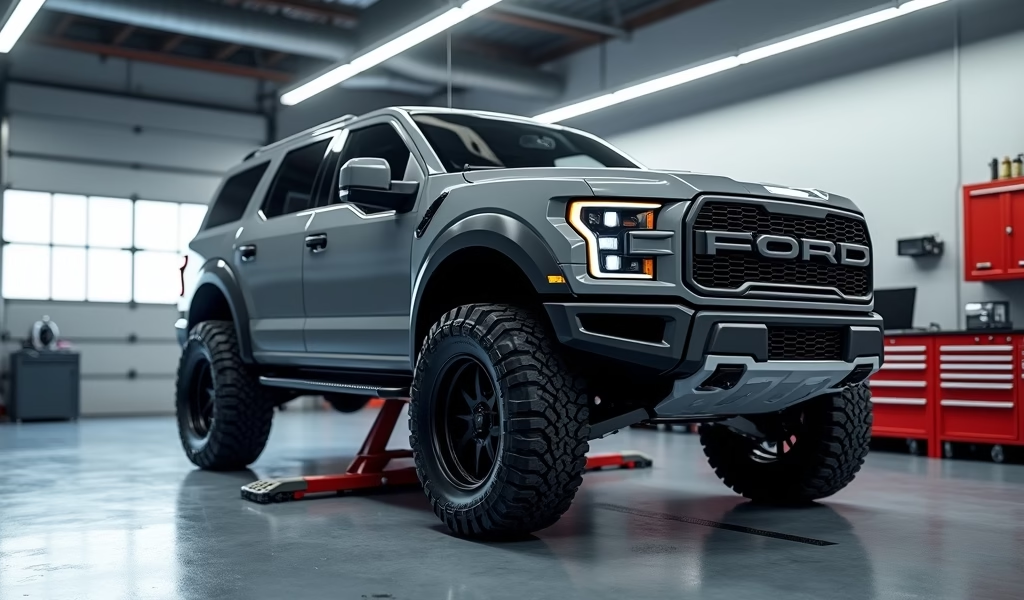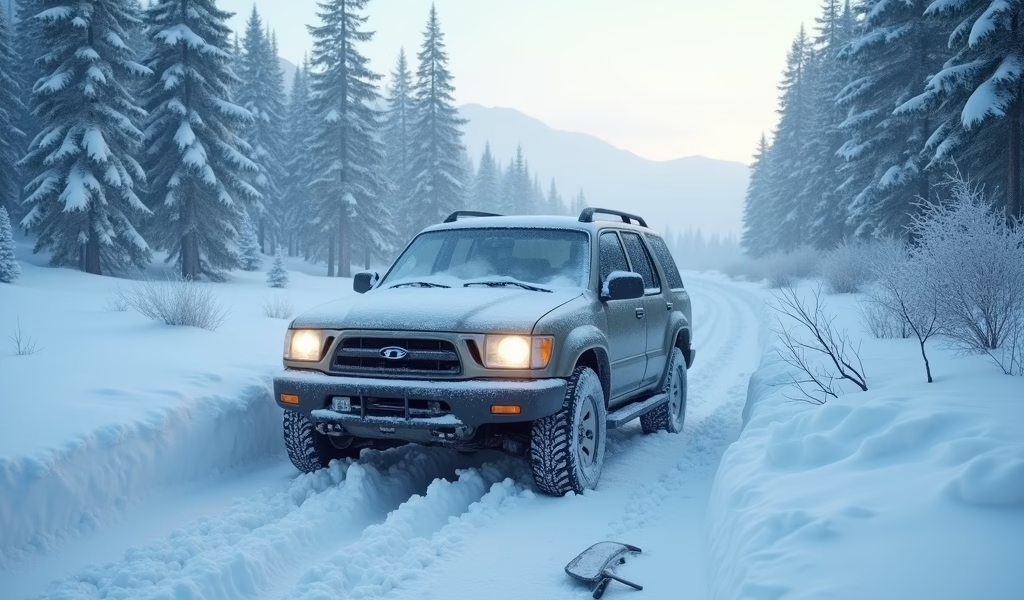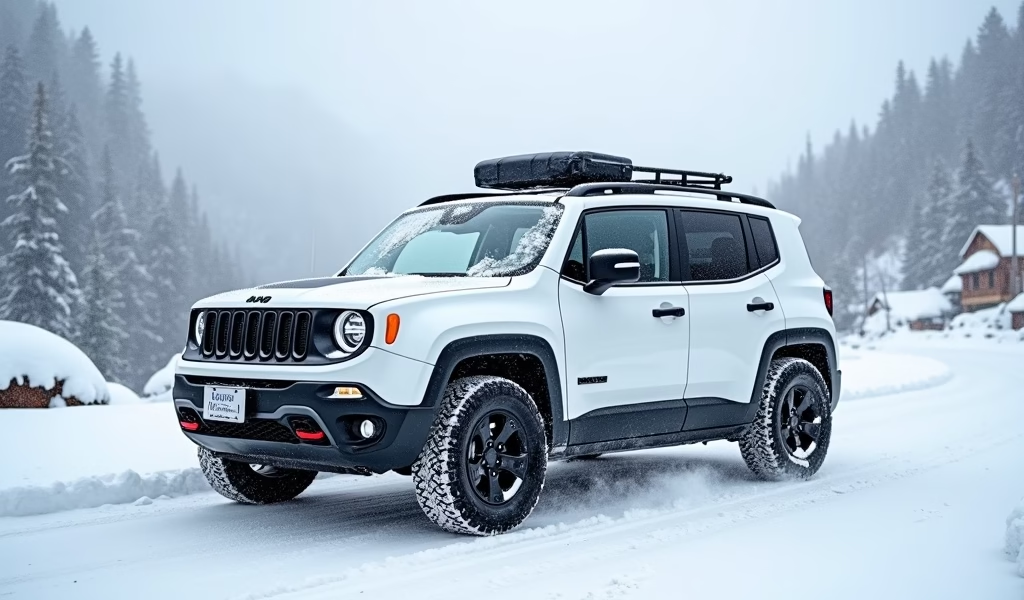Overview
This article provides essential guidance on selecting vehicles for winter driving, highlighting key features like AWD/4WD systems, ground clearance, and weight distribution across SUVs, sedans, and trucks. Beyond vehicle selection, the article emphasizes the critical importance of winter tires, proper maintenance, and emergency preparedness for safe winter driving.
Table of Contents
- What Makes a Vehicle Snow-Worthy?
- Top SUVs for Snow Driving
- Sedans and Hatchbacks for Winter
- Trucks That Handle Snow
- Winter Tire Essentials
- Maintenance Tips for Winter
- Advanced Features for Snow Driving
- Conclusion
- Frequently Asked Questions
What Makes a Vehicle Snow-Worthy?
When winter blankets our roads with snow and ice, having the best vehicle for snow conditions becomes more than just a convenience – it’s a safety essential. As a mechanic who’s helped countless drivers prepare for winter’s challenges, I’ve seen firsthand how the right vehicle can make all the difference between confidently navigating snowy streets and being stranded in a drift.
Snow-worthy vehicles share several key characteristics that help them perform when the flakes start to fall. Think of these features as your vehicle’s winter armor, each playing a crucial role in keeping you moving safely when conditions deteriorate.
All-Wheel Drive vs. Four-Wheel Drive
The debate between AWD and 4WD is like comparing different tools designed for similar jobs. All-wheel drive systems, like those found in many Subarus, continuously distribute power to all four wheels automatically. They’re like vigilant guardians, instantly responding when they detect wheel slip without any driver intervention.
Four-wheel drive systems, common in trucks and larger SUVs, typically require manual engagement and distribute power equally to all wheels. They’re the heavyweight champions of traction, particularly effective in deep snow and more challenging terrain, but sometimes unnecessary for light winter conditions.
Ground Clearance Matters
A vehicle’s ground clearance serves as its snowshoes, allowing it to glide over rather than plow through deep snow. Vehicles with at least 8 inches of clearance generally navigate unplowed roads more effectively, helping you avoid the frustration of becoming high-centered on snow banks.
Higher clearance also helps protect vital undercarriage components from damage caused by hidden obstacles beneath the snow. Many drivers learn this lesson the hard way when they damage oil pans or exhaust systems on snow-covered road debris.
Weight Distribution
Like a balanced ice skater gracefully navigating a frozen pond, vehicles with even weight distribution between front and rear axles typically offer superior stability on slippery surfaces. This balance helps maintain traction during acceleration, braking, and cornering – the three moments when winter driving becomes most challenging.
Some front-heavy vehicles can still perform admirably when properly equipped with winter tires and driven with appropriate technique. However, vehicles designed with balanced weight distribution have a natural advantage when conditions turn slick.

Top SUVs for Snow Driving
SUVs have become the go-to choice for winter driving, and for good reason. They combine capable traction systems with generous ground clearance – a winning combination when the snow piles up. After years of winter maintenance and hearing customer feedback, these models consistently rise to the top.
Subaru Forester and Outback
Subaru’s symmetrical all-wheel-drive system has earned legendary status among winter drivers in snow-belt states. Both the Forester and Outback offer 8.7 inches of ground clearance and X-Mode technology that optimizes the engine, transmission, and braking systems for maximum traction on slippery surfaces.
What makes these vehicles particularly appealing is their combination of winter capability with everyday practicality. Unlike some SUVs that feel like tanks, Subarus maintain car-like handling while still conquering snow with confidence. Their value-oriented pricing (starting around $26,945) makes them accessible to many families seeking winter security.
Jeep Grand Cherokee
The Grand Cherokee blends luxury with genuine winter capability. Its available Quadra-Drive II system with an electronic limited-slip differential can direct nearly all engine torque to a single wheel if necessary – like having a skilled winter driver automatically making adjustments for you.
The available air suspension can raise ground clearance to an impressive 10.8 inches when needed, turning this refined SUV into a snow-conquering machine. Comfort features like heated seats, steering wheel, and windshield wiper de-icers make winter commutes significantly more pleasant.
Toyota RAV4
Toyota’s popular compact SUV offers surprising winter capability that belies its modest size. The available Dynamic Torque Vectoring All-Wheel Drive can direct up to 50% of engine power to the rear wheels and distribute it between the left and right rear wheels for optimal traction.
With 8.6 inches of ground clearance and Toyota’s reputation for bulletproof reliability, the RAV4 represents a sensible choice for families facing seasonal snow. The multi-terrain select system includes a dedicated snow mode that optimizes power delivery specifically for winter conditions.
Volvo XC60 and XC90
It’s no surprise that vehicles designed in Sweden excel at winter driving. Volvo’s SUVs combine instant-response AWD systems with advanced electronic stability controls developed specifically for winter conditions.
Beyond their capable drivetrains, these Scandinavian SUVs include thoughtful winter features like heated windshield washer nozzles and headlight washers that maintain visibility during snowstorms. Their exceptional safety ratings provide additional peace of mind when road conditions deteriorate.
Sedans and Hatchbacks for Winter
While SUVs get most of the winter spotlight, several sedans and hatchbacks offer impressive snow capability for drivers who prefer a lower profile. These vehicles prove you don’t need a towering ride height to navigate winter confidently.
Subaru Impreza and Legacy
Subaru’s car lineup features the same symmetrical all-wheel drive system found in their SUVs. The Impreza (starting at just $19,795) represents one of the most affordable entries into all-wheel drive capability, making it the winter-driving secret weapon for budget-conscious shoppers.
The larger Legacy offers more interior space while maintaining Subaru’s winter prowess. Both vehicles deliver impressive fuel economy compared to similarly capable SUVs, making them practical year-round choices for regions with seasonal snow.
Audi A4 with Quattro
Audi’s Quattro system has been refined through decades of rally racing in some of the world’s most challenging winter conditions. The A4 distributes torque not just between front and rear axles but also side-to-side, helping maintain traction during cornering on slippery surfaces.
The A4’s sophisticated traction system is complemented by a premium interior featuring heated everything – seats, steering wheel, mirrors – creating a luxurious winter sanctuary. Its excellent safety ratings provide additional reassurance for winter drivers.
Toyota Camry AWD
Toyota’s relatively recent addition of all-wheel drive to America’s bestselling sedan brings winter capability to a familiar favorite. The system can send up to 50% of engine power to the rear wheels when needed, helping maintain traction during acceleration on snow-covered roads.
The Camry AWD maintains the model’s legendary reliability while adding confident winter performance. Its competitive fuel economy (25/34 mpg) means you won’t pay a significant efficiency penalty for the added security of all-wheel drive.
Volkswagen Golf with 4Motion
The Golf offers European engineering with practical winter features in a compact package. Its 4Motion AWD system (derived from Audi’s technology) provides sophisticated traction control that excels on slippery surfaces.
The Golf’s compact dimensions actually work to its advantage in winter, making it nimble and responsive when navigating tight winter parking lots or maneuvering around obstacles. Available in both hatchback and wagon configurations, it offers practical versatility along with its winter capability.
Trucks That Handle Snow
For those who need to combine work capability with winter performance, several trucks stand out for their ability to handle snow with confidence. These workhorses don’t take winter off when the temperature drops.
Ford F-150 with 4WD
America’s bestselling vehicle for decades offers several features that make it a winter workhorse. The available selectable 4WD modes allow drivers to choose the appropriate setting based on conditions, from light snow to deep drifts.
The F-150’s electronic locking rear differential provides additional traction when needed, while the dedicated Snow/Wet driving mode adjusts throttle response and traction control settings for optimal winter performance. For those facing winter power outages, the available Pro Power Onboard generator system can even power essential home appliances.
Ram 1500
The Ram combines work capability with a surprisingly sophisticated ride quality that’s particularly welcome on winter-ravaged roads. Its available 4-Corner Air Suspension can raise the truck for additional clearance in deep snow or lower it for easier entry in normal conditions.
The automatic 4WD system on higher trims takes the guesswork out of winter driving by engaging additional traction as needed. Thoughtful features like heated seats, steering wheel, and side mirrors make the Ram a comfortable winter companion when temperatures plummet.
Toyota Tacoma
This midsize truck has developed a devoted following for its reliability and capability in challenging conditions. Its Multi-terrain select system includes a dedicated snow mode that optimizes power delivery for winter driving.
The available Crawl Control functions like low-speed cruise control in difficult conditions, allowing the driver to focus entirely on steering while the truck manages throttle and braking automatically. This feature proves particularly useful when navigating steep, snowy driveways or unplowed roads.
Winter Tire Essentials
Even the most capable snow vehicle is only as good as its tires. As someone who’s helped countless drivers prepare for winter, I can confidently say that winter tire compounds make more difference than any other single factor in snow performance.
Winter tires are to snow driving what specialized climbing shoes are to rock climbing – they transform your vehicle’s capabilities dramatically. The unique rubber compounds remain flexible in freezing temperatures, while their specialized tread patterns provide bite into snow and ice.
What Makes Winter Tires Different
Winter tires differ from all-season tires in three crucial ways. First, their rubber compounds remain pliable in cold temperatures, maintaining grip when all-seasons become hard and slippery. Second, their deeper tread depths provide better snow evacuation, preventing the tires from packing with snow.
Finally, winter tires feature thousands of tiny slits called sipes that create biting edges on snow and ice. These sipes work like the treads on winter boots, providing hundreds of additional edges that grip the surface with each rotation.
Studded vs. Studless Options
In areas with frequent ice, studded tire regulations permit metal studs embedded in the tread that physically bite into ice surfaces. These provide unmatched traction on ice but create more road noise and may be restricted in some regions due to road damage concerns.
Modern studless winter tires have nearly closed the performance gap using advanced technology. Microscopic pores in the tread surface actually absorb water from the top layer of ice, creating suction-cup-like adhesion. For most drivers, today’s premium studless winter tires offer the ideal balance of performance and convenience.

Maintenance Tips for Winter
Beyond choosing the right vehicle, proper maintenance dramatically impacts winter performance. These practical tips will help keep your vehicle running reliably when temperatures plummet.
Battery Care
Cold temperatures are battery killers, reducing capacity by up to 50% in extreme conditions. Have your battery tested before winter arrives – a battery that’s marginally acceptable in summer may fail completely during the first cold snap.
Consider a battery with a higher Cold Cranking Amps (CCA) rating than your vehicle’s minimum requirement. This provides additional starting power when your engine oil thickens and components resist movement in freezing temperatures.
Fluid Checks
Your vehicle’s fluids need special attention when temperatures drop:
- Switch to a winter-grade oil if recommended by your manufacturer
- Ensure antifreeze protection to at least -30°F
- Use winter-formulated windshield washer fluid that won’t freeze in the reservoir or on contact with your windshield
- Check brake fluid, as moisture contamination can lead to freezing and brake failure
These simple checks can prevent many common winter breakdowns. Remember that fluids thicken in cold weather, making your engine work harder during startup. Regular maintenance becomes even more critical during winter months.
Emergency Kit Essentials
Even the most capable vehicles can encounter trouble in severe winter conditions. Your winter emergency kit should include:
- Folding shovel and traction aids (sand, cat litter, or traction mats)
- Blankets and extra warm clothing
- Non-perishable snacks and water
- Flashlight with extra batteries
- Portable phone charger
- Basic first-aid supplies
These items take up minimal space but can make a tremendous difference if you become stranded during a winter storm. The peace of mind they provide is well worth the trunk space they occupy.
Advanced Features for Snow Driving
Modern vehicles offer technology specifically designed to enhance winter driving comfort and safety. When shopping for the best vehicle for snow, these features deserve special consideration.
Heated Components
The luxury of heated components becomes practical necessity in frigid climates. Heated seats warm you from below while heated steering wheels eliminate the need for bulky gloves that reduce grip and control.
Heated side mirrors quickly clear snow and prevent ice buildup that can reduce visibility. Some vehicles even offer heated windshield and wiper rest areas that prevent wipers from freezing to the glass – a small feature that makes a huge difference on frosty mornings.
Remote Start Systems
Starting your vehicle remotely allows it to warm up before you enter, making winter mornings significantly more pleasant. Factory-installed systems typically integrate with vehicle security and can be controlled through smartphone apps.
The most sophisticated systems can activate defrosters and heated seats automatically, ensuring your vehicle is both warm and cleared of frost when you’re ready to depart. According to Consumer Reports, modern vehicles need minimal warm-up time, but the comfort benefits of remote start remain significant.
Snow Modes and Traction Control
Specialized driving modes adjust multiple vehicle parameters for optimal winter performance. These systems typically reduce throttle sensitivity to prevent wheelspin and modify transmission shift patterns to maintain stability.
Hill descent control helps navigate steep, slippery inclines by automatically managing braking and acceleration. This allows the driver to focus entirely on steering, removing much of the stress from challenging winter driving situations.
Conclusion
Finding the best vehicle for snow conditions involves considering your specific needs, budget, and typical winter challenges. SUVs like the Subaru Forester and Jeep Grand Cherokee excel with their combination of ground clearance and sophisticated AWD systems. For sedan lovers, the Subaru Legacy and Audi A4 Quattro prove that lower vehicles can still be winter warriors.
Regardless of which vehicle you choose, remember that winter tires remain the single most important upgrade for any vehicle facing snowy conditions. Even front-wheel drive vehicles with proper winter tires often outperform AWD vehicles with all-season rubber when it comes to braking and cornering – the two most critical aspects of winter safety.
Regular maintenance checks—especially battery, fluids, and wipers—will help prevent cold-weather breakdowns. A small investment in preventative maintenance can save you from being stranded when temperatures plummet.
Ready to prepare your vehicle for winter’s challenges? At Knows Your Car, our Winter Readiness Package includes battery testing, fluid checks, tire inspection, and a complete system evaluation to identify potential cold-weather issues before they leave you stranded. Don’t wait until the first snowfall – schedule your appointment today by calling (555) 123-4567 or visiting our website. Your safety on winter roads starts with a properly maintained vehicle!
Frequently Asked Questions
What’s better for snow: AWD or 4WD?
AWD is generally better for everyday winter driving as it works automatically without driver intervention. 4WD provides superior capability in deep snow and off-road conditions but typically requires manual engagement.
Do I really need winter tires if I have AWD?
Yes, winter tires are essential even with AWD. AWD helps with acceleration, but winter tires improve braking and cornering which are more critical for safety.
What’s the minimum ground clearance needed for snow driving?
For light to moderate snow, 6-7 inches of clearance is generally sufficient. For regions with heavy snowfall or unplowed roads, 8+ inches is recommended.
Are SUVs always better than sedans in snow?
Not necessarily. A sedan with winter tires and AWD often outperforms an SUV with all-season tires. The combination of vehicle type, drivetrain, and proper tires determines winter capability.
How much should I budget for a good set of winter tires?
A quality set of winter tires typically costs $600-$1,000 including mounting and balancing. This investment pays dividends in safety and helps preserve your all-season tires for longer overall tire life.

